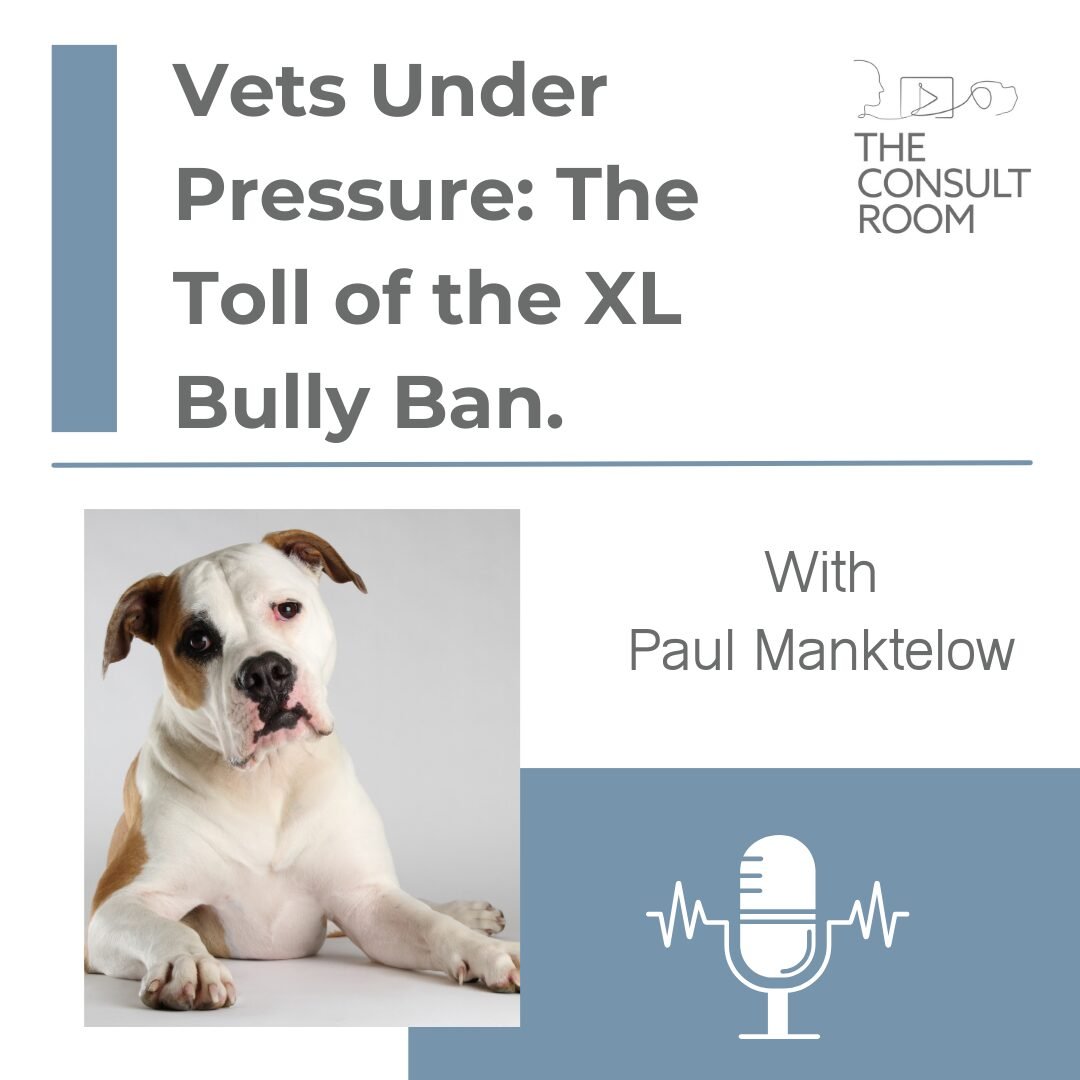| Some of our most popular breeds in the UK are the Brachycephalics, those flat-faced dogs like bulldogs, French bulldogs and pugs. But Brachy breeds are also hotly debated and divisive in the pet world, with vets and animal welfare campaigners regularly moving to ban them altogether. Central to the discussion is the issue of breeding and the breathing disease known as Brachycephalic Obstructive Airway Syndrome (BOAS).
When it comes to these breeds and this disease, Dr Jane Ladlow, Director of Research at Cambridge University, is one of the UK’s leading professionals. Jane’s worked with Brachycephalic breeds for nearly 20 years and, as a veterinary specialist in small animal surgery, she has developed groundbreaking techniques for assessing and treating dogs with BOAS and has introduced health schemes for these breeds which are used round the world. For a podcast discussing the devising topic of flat-faced dogs, having a chat with Jane was the real-deal for me. But what’s Brachy?In the blog and podcast, Brachycephalics is mentioned frequently so for clarity Jane explained exactly why bulldogs, French bulldogs and pugs fall into this category – and why some of these dogs experience problems. ‘The thing to focus on is it’s short and wide head so it’s not just the length of the nose, it’s also the actual length of the skull, the calvarium. Many of these dogs have also got a wider head, so you can’t just focus on one area you’ve got to look at the whole conformation of the head. The reason we struggle with these breeds is because sometimes conformational aspects are linked to areas in the airway that are either obstructed or restricted, so many of these dogs have breathing obstruction or breathing difficulties.’ Dedicated to flat faced dogsJane became interested in working with these breeds after operating on a few bulldogs. Although these breeds were meant to ‘do brilliantly’ after surgery, this wasn’t so for the dogs Jane was seeing. After discovering that post-surgery had historically been conducted by questionnaire or phone call, not by actually seeing the dogs, Jane uncovered the problem: ‘One of the major issues we have with the airway obstruction is that people don’t recognise it, so if you ask somebody who doesn’t recognise the symptoms ‘how’s it doing’ they’re going to say ‘fine.’ Jane explained. ‘So I thought we’ll just measure the breathing function!’ Assessment starting pointWith breeders saying their dogs were fine, but surgery outcomes telling a different story, Jane’s next step was to define the disease by developing an objective assessment. After much experimentation, Jane developed an assessment chamber called a Whole Body Barometric Plethysmograph – a clear big chamber resembling a fish bowl. Once inside it, the dog’s inhalation, exhalation and the respiratory time is measured. Results were calculated as a numerical score, showing how obstructed the dogs were over a period of about 5 or 6 years. Refining the processDespite being an incredibly useful piece of equipment, the Barometric Plethysmograph is expensive and requires trained staff to run it. With each test taking approximately 90 minutes, its use in general veterinary practice or even referral centres is not practical. But Jane realised that the training required to run the equipment was itself a simple, useful and cost-effective clinical assessment tool requiring only a stethoscope to carry out: ‘We could see all these dogs that were affected around us, so we put that out as a respiratory function grading scheme.’ This Respiratory Function Grading scheme (RFG) is now used:
Noisy breathing isn’t normalBreeders are central to conversations around flat-faced dogs, but whilst RFG became an assessment tool to help breeders, Jane shared it’s also become a vital support to vets: ‘I came up with it for the breeders, but I’m teaching a lot of vets how to do this now because it’s so simple and I think it’s really useful to be able to talk the same language, measure something and then define it.’ One issue many of us professionals and pet owners are aware of, is the ‘noisy breathing’ associated with flat-faced dogs. Jane explained that her clinical assessment tool is central to defining this: ‘We all knew what BOAS was but it’s not defined anywhere so everyone talked about ‘noisy breathing’ but many people didn’t react to noise when they heard these dogs making it. So what is noisy breathing? How much is too noisy?’ Refusing to accept noisy breathing as ‘normal for the breed’ Jane’s assessment tool puts criteria and definition around ‘noisy breathing’ to facilitate vital evaluation and monitoring. RFG in actionThe RFG involves simple assessment of the dogs after exercise. The dogs trot for just 3 mins at about 4-5 miles (6-8 km) per hour whilst vets evaluate their respiratory effort and airway noise. Dogs are then graded between 0 and 3, as follows:
Divided opinionsAs mentioned, there’s a big difference of opinion over the issue of BOAS, especially around breeding for ‘looks’ from flat-faced dogs struggling with the disease. On one side are dog-lovers who want to see change and improved welfare, for example animal welfare advocates and vets. These tend to be professionals involved in the treatment of these dogs, as Jane recognised: ‘You see dogs coming in that are in severe distress and the owners don’t even notice […] And when you’re operating on them and you see you’re operating on a disease which is essentially man-made, it’s really challenging. So I have a lot of sympathy because if you’re working on them and you can see how they’re suffering, it really isn’t pleasant.’ The other side of the debate are dog-lovers who choose to own and perhaps breed these dogs. From working with so many breeders in the development of RFG, Jane acknowledged the many good breeders who truly adore their dogs and actively work towards improving health and welfare. Jane highlighted that these healthier dogs are the ones the vets don’t see: ‘Sometimes vets don’t see that, when you look at some of the breeders’ dogs, there are some really good dogs out there – if you’re focused on the diseased ones, sometimes you miss the good ones. Likewise, the breeders breeding decent dogs don’t understand sometimes why the vets are so antagonistic, because they’re not always seeing the severely affected ones. Seeing the whole picture makes things easier.’ Being part of the pictureAs an authority on flat-faced dogs, Jane holds that rare position of seeing the whole picture and of being respected by those on all sides of an argument where both the topic, and some of the organisations involved, see a lot of controversy. This means she walks the tricky tightrope of engaging with breeders and organisations which receive negative press, whilst also supporting vets and providing tools to use in clinical practice. Although this can present challenges, Jane’s happy to be visible in order to support the wellbeing of dogs, including through Crufts and the Kennel Clubs: ‘I can talk to the breeders now. I’ve managed to get myself into a position – having proven the existence of the disease, the fact this is not right, the fact that’s too noisy – where I can stand up and say the evidence is saying this! I can get into areas that I wouldn’t get into if I just stood back and said, ‘oh, your dogs are terrible.’ And actually the dogs are not terrible!’ So why are flat-faced dogs our favourites?Flat-faced dogs enjoy huge popularity across the UK, something Jane has noticed particularly since starting her work with the breeds: ‘When I started the research in 2003 we saw English bulldogs which are just bulldogs and we saw a few pugs, we didn’t see a lot of French Bulldogs, and then they went exponential! Although numbers have dropped slightly from 2020 there are still approx 45,000 registered French Bulldogs – and that’s only about 20% of the population in the UK per year.’ One of the reasons they’re popular is that people like how these breeds look. With their large eyes resembling a human child, they also maintain eye contact for longer than many other dogs which is significant for owners, as Jane explained: ‘This prolonged eye-contact means owners get a release of prolactin and that stimulates your feel-good factor and facilitates bonding. Also, they are really funny, nice dogs to have around so I understand why people find them appealing and why they like them.’ Listen on the podcast to find out how bonding through breastfeeding links prolactin to flat-faced doggies.Good pet or poorly pet?But whilst they’re popular, are these breeds good as pets? With the average lifespan of French Bulldogs currently at 4.5 years due to the prevalence of diseased dogs, the answer again relates to breeding and BOAS. Jane explained that flat-faced dogs can make good pets, IF you get the right dog from the right, reputable breeder: ‘It’s interesting, I recently [RFG] graded a French Bulldog that I graded when it was 2 years old. He’s now 10, still grade 0, and that dog’s running around, happy, great life. But if you have a French Bulldog with really bad airway disease – plus, many of the dogs that have got bad airway disease are also looking now like they are more predisposed to the spinal issues – they get disc disease – then you bounce from an airway problem into a back problem, maybe you’ve got some skin folds you’ve got to clean daily as well? There’s a lot of involvement and there’s a lot of cost! So if you get the right dog they can be great pets but if you get one of the unhealthy ones, you are looking at thousands of pounds and quite a lot of distress, I think.’ Health issues beyond BOASWith the health of these dogs at the heart of our discussion, Jane offered a useful nose-to-tail summary of health issues associated with flat-faced bulldog breeds:
Although Jane acknowledged that this summary makes an unpleasant picture, she also shared that greater knowledge and awareness of how these issues are linked is itself a positive step for the breeds: ‘So, if you’ve got a dog with really poor conformation it will affect many areas and some of the risk factors for BOAS that we’ve teased out, like having the shorter necks and having the wider heads, are almost certainly going to contribute to having problems giving birth and also to having disc disease.’ Improving healthDespite that grim overview, the awareness this brings to breeding and wellbeing means that around 50% of the population of these breeds now have significantly improved health in relation to BOAS. Where BOAS was previously understood to start at around 1 or 2 years of age and is progressive, data from Jane’s retesting routines now shows this isn’t necessarily the case: ‘I retested a 10 year old bulldog recently. It was [grade] 2 at the age of 1 and it was a grade 2 at the age of 10 and I was super-surprised. I think what happens is that the dogs with the really bad airways present early, then get worse, but other dogs are a little bit more stable.’ Jane plans to keep retesting these dogs to ensure a big enough data set for in-depth analysis, but Jane is cautiously positive: ‘I don’t think there’s this idea that every single dog is going to end up with obstructed breathing and I’m seeing a refreshing number of older dogs that look reasonably decent.’ But with the link between BOAS and disc disease, research into disc disease remains an area for significant further study: ‘Many dogs have vertebral abnormalities so what we need to know is how many of those dogs actually do have disc disease throughout their life? With the RFG programme dogs are tested every 2 years, so Jane is hopeful that the next 10 years will also generate useful data about disc disease as the dogs get older. Unhealthiest breeds or unfortunate influence?With the controversy around flat-faced dogs being carried out so publicly and perpetuated in the media and social media, these breeds have a conflicting reputation: the most popular as well as the unhealthiest breeds in the UK. Jane agreed that extreme Brachycephalic breeds ‘are probably the unhealthiest, because they have so many areas that can be affected’ but also recognised that other enormously popular breeds without flat faces, like the Miniature Daschund, also experience conformation-related problems such as disc disease. All of which leads to the bigger question of exactly why these ‘exaggerated’ dog breeds with diseases are so popular? Jane rightly asked ‘how do we alter perception to actually focus on the health of the dog, rather than the look of the dog?’ As a vet I share Jane’s concern and you can hear more views about how this is played out on social media in the podcast, or by reading my separate blog on this topic.So where does this leave responsible flat-faced dog owners who want their pet to live a healthy and happy life?From Jane’s perspectives as a vet, surgeon and research clinician, the RFG scheme is central in helping owners too: ‘vets can introduce RFG scheme when those dogs are young and do not have problems. We have information leaflets on this, vets can give the owners the information so that they can watch the dogs carefully and if they notice any of the symptoms they’ll come to you earlier rather than later.’ Jane also advised that for all flat-faced dogs, but particularly pugs, owners can really support their dogs’ health through weight management: ‘keep them slim! Particularly in the pug, obesity is a massive issue and can easily increase the severity of any breathing disorders by 20% or 30%. So keeping those dogs thin and healthy – well actually keeping all dogs thin and healthy – is super-important, but particularly the flat-faced dogs.’ So can we ever have a healthy, flat-faced dog?Although the situation for flat-faced dogs seems to be improving, it’s clear there’s much more work to be done. As a soft-tissue veterinary surgeon, Jane easily sums this up: ‘I would happily lose some of my airways because we had healthier dogs coming through!’ But a rising concern we both share is the current trend for more exaggerated cross-breeds, dogs known as Toad line bulldogs, bred to achieve a certain look but with a life of pain for the animal itself: ‘these poor dogs can barely walk, they can barely move so it’s also how you influence the public to look at a dog as a dog, that should have healthy exercise. It should be able to run and enjoy its life, we need to switch it from being a status symbol, to being a healthy dog.’ This sums up what was a great conversation on a fascinating topic, which puts the health and quality of life of these animals right at the heart of both my own and Jane’s work. For more information on flat-faced dogs, particularly if you are considering buying one or you want to support the health of one you already own:
|
 Paul Manktelow is a vet who’s worked for almost 20 years on the front line in some of the UK’s busiest veterinary hospitals. As Chief Vet in the Charity Sector, he leads a team of vets and nurses that treat thousands of pets every year. Paul also appears regularly in the media as a TV and radio presenter, writer, public speaker and podcast producer. Paul Manktelow is a vet who’s worked for almost 20 years on the front line in some of the UK’s busiest veterinary hospitals. As Chief Vet in the Charity Sector, he leads a team of vets and nurses that treat thousands of pets every year. Paul also appears regularly in the media as a TV and radio presenter, writer, public speaker and podcast producer. |






Leave A Comment